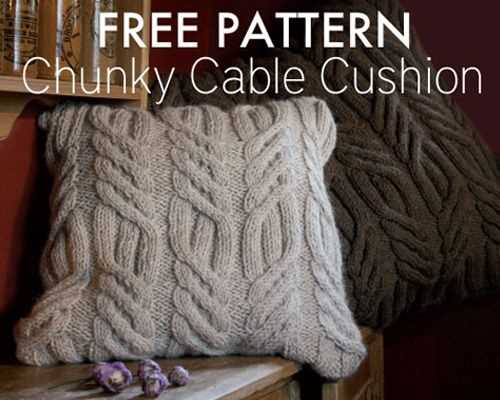
If you love the cozy and classic look of cable knit, then you’re in luck! We have compiled a collection of free knitting patterns for cushions in cable knit that will add a touch of elegance to any home decor. Whether you’re a beginner or an experienced knitter, these patterns offer a variety of styles and designs to suit your taste.
Knitting cushions in cable knit not only allows you to showcase your knitting skills, but it also provides a unique and textured look. The intricate cable patterns create beautiful texture and depth, making these cushions stand out in any room. From simple and understated designs to more complex and intricate patterns, there is something for everyone.
With these free knitting patterns, you can create cushions in cable knit for your living room, bedroom, or even as a thoughtful gift for a loved one. The patterns include detailed instructions, stitch guides, and recommended materials, making it easy for you to create your own cozy cushion. So grab your knitting needles, pick your favorite pattern, and get ready to knit your way to comfort and style!
What is cable knit?
Cable knit is a popular knitting technique that creates a textured and intricate pattern on fabric. It is characterized by the use of cables, which are twisted stitches that create raised ropelike designs. The result is a visually appealing pattern that adds depth and visual interest to knitted garments and accessories.
In cable knitting, stitches are crossed over each other to form the cable pattern. This is achieved by temporarily holding a group of stitches on a cable needle or a spare piece of yarn, while working the next set of stitches. The held stitches are then worked in a different order, crossing them over to create the cable effect.
The origins of cable knitting can be traced back to the Aran Islands off the west coast of Ireland. It was initially used as a practical way to create warm and durable garments for fishermen and farmers. The intricate cables not only added texture but also served to help identify the wearer in case of accidents at sea.
Today, cable knit is a popular technique used in a variety of knitting projects, including sweaters, hats, scarves, and cushions. It offers endless design possibilities and allows knitters to create unique and personalized pieces. Whether you’re a beginner or an experienced knitter, cable knit patterns can be easily found online or in knitting books, providing inspiration and guidance for your next project.
Benefits of using cable knit for cushions
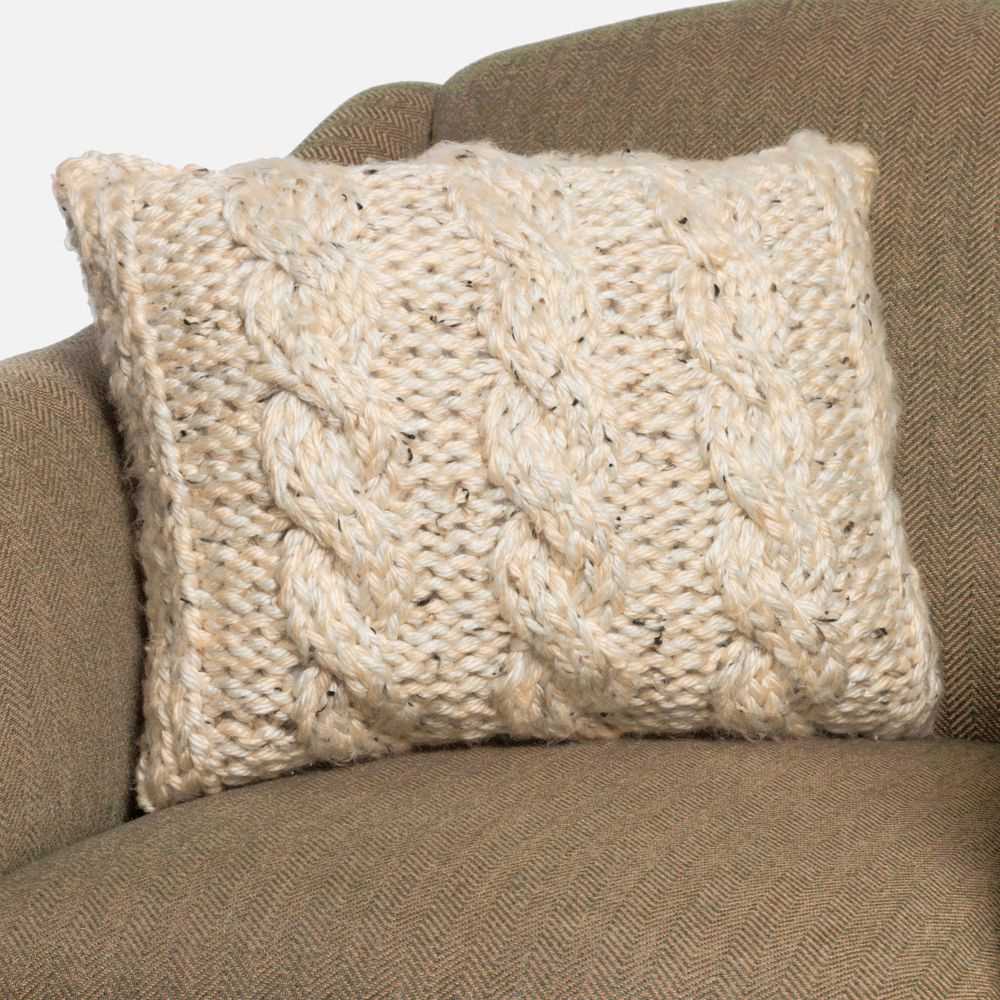
When it comes to choosing patterns for cushions, cable knit designs offer several benefits that make them a popular choice. Cable knit patterns are not only visually appealing, but they also add texture and depth to the cushions, making them stand out as unique statement pieces in any room.
1. Classic and Timeless Look: Cable knit patterns have been used for centuries and continue to be a classic choice for home decor. The intricate details and interlocking twists create a sense of elegance and sophistication that never goes out of style.
2. Enhanced Comfort: Cable knit cushions provide an extra layer of comfort due to the thicker and more substantial fabric used in cable knitting. The cable pattern adds thickness and warmth to the cushions, making them perfect for cozying up on a cold winter night.
3. Durability: Cable knit patterns are known for their durability and longevity. The cables themselves create a sturdy and strong fabric that can withstand everyday use and last for years. This makes cable knit cushions an investment that will stand the test of time.
4. Versatility: Cable knit cushions can easily fit into various interior design styles, from traditional to modern. They complement a wide range of color schemes and can be paired with other textures and patterns to create a cohesive and visually interesting look.
5. DIY Potential: Cable knit patterns are ideal for those who enjoy knitting and crafting. With so many free knitting patterns available, you can easily create your own cable knit cushions, adding a personal touch to your home decor. Additionally, knitting your own cushions allows you to customize the size and color to perfectly fit your space.
Overall, cable knit cushions offer a unique combination of visual appeal, comfort, durability, versatility, and DIY potential. Their timeless look and ability to enhance any space make them a fantastic choice for adding style and coziness to your home.
Choosing the right yarn for cable knit cushions
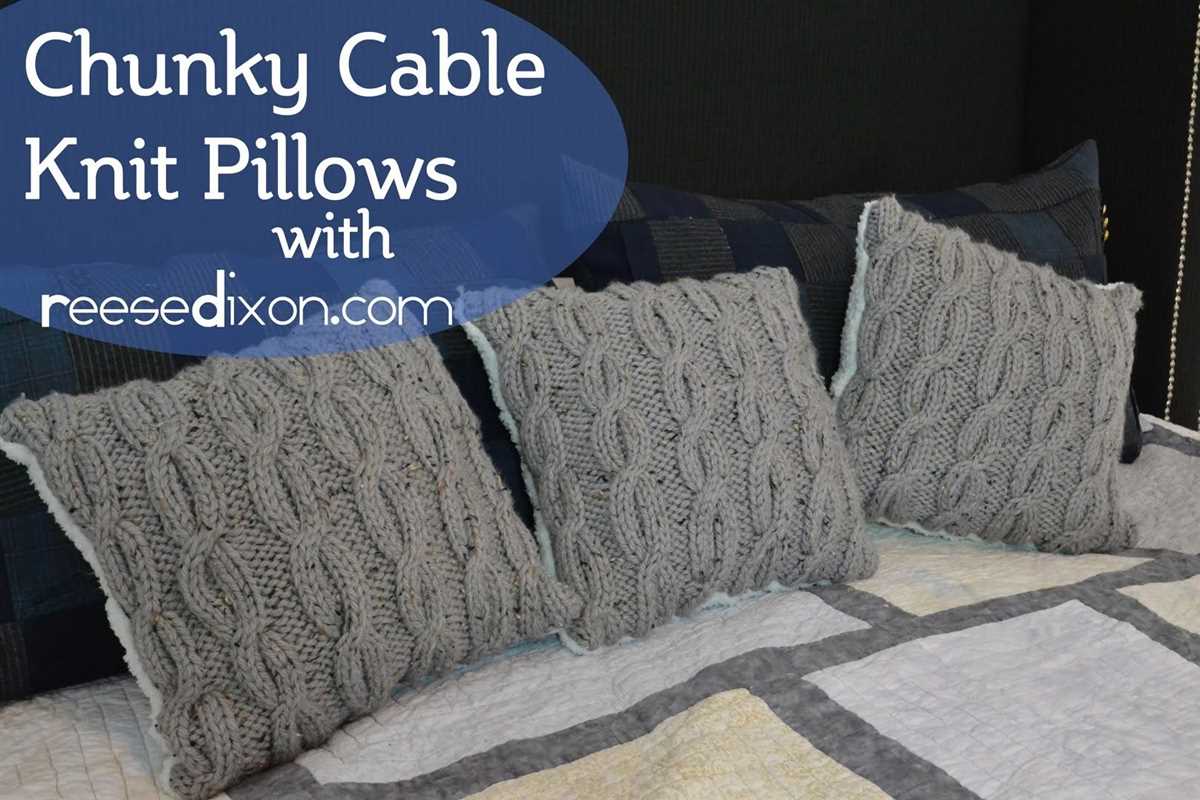
When it comes to choosing the yarn for your cable knit cushions, there are a few factors to consider. The type of yarn you choose will greatly affect the final look and feel of your cushions, so it’s important to choose wisely.
Firstly, consider the weight of the yarn. For cable knit patterns, a medium or bulky weight yarn is usually preferred. These weights will make the cables stand out and give your cushions a cozy and substantial feel. A lightweight yarn may not hold the cable pattern as well and could result in a less defined texture.
Next, think about the fiber content of the yarn. Natural fibers like wool and alpaca are popular choices for cable knit projects as they have a good amount of stretch and help the cables hold their shape. They also provide warmth and durability to your cushions. If you prefer a synthetic fiber, look for one that has some elasticity to ensure that the cables remain crisp and well-defined.
Another factor to consider is the color of the yarn. Cable knit patterns often look best in solid or lightly variegated colors, as intricate color patterns can distract from the texture of the cables. However, if you want to add a touch of visual interest, you can choose a yarn with a subtle tweed or heathered effect.
Lastly, don’t forget to check the yardage and gauge of the yarn. Make sure you have enough yarn to complete your project and that the gauge matches the pattern requirements. Using a different yarn weight or gauge can significantly alter the size and shape of your cushions.
By considering these factors and choosing the right yarn for your cable knit cushions, you can ensure that your finished project looks and feels just as cozy and beautiful as you imagined.
Tools and materials needed for cable knit cushion projects
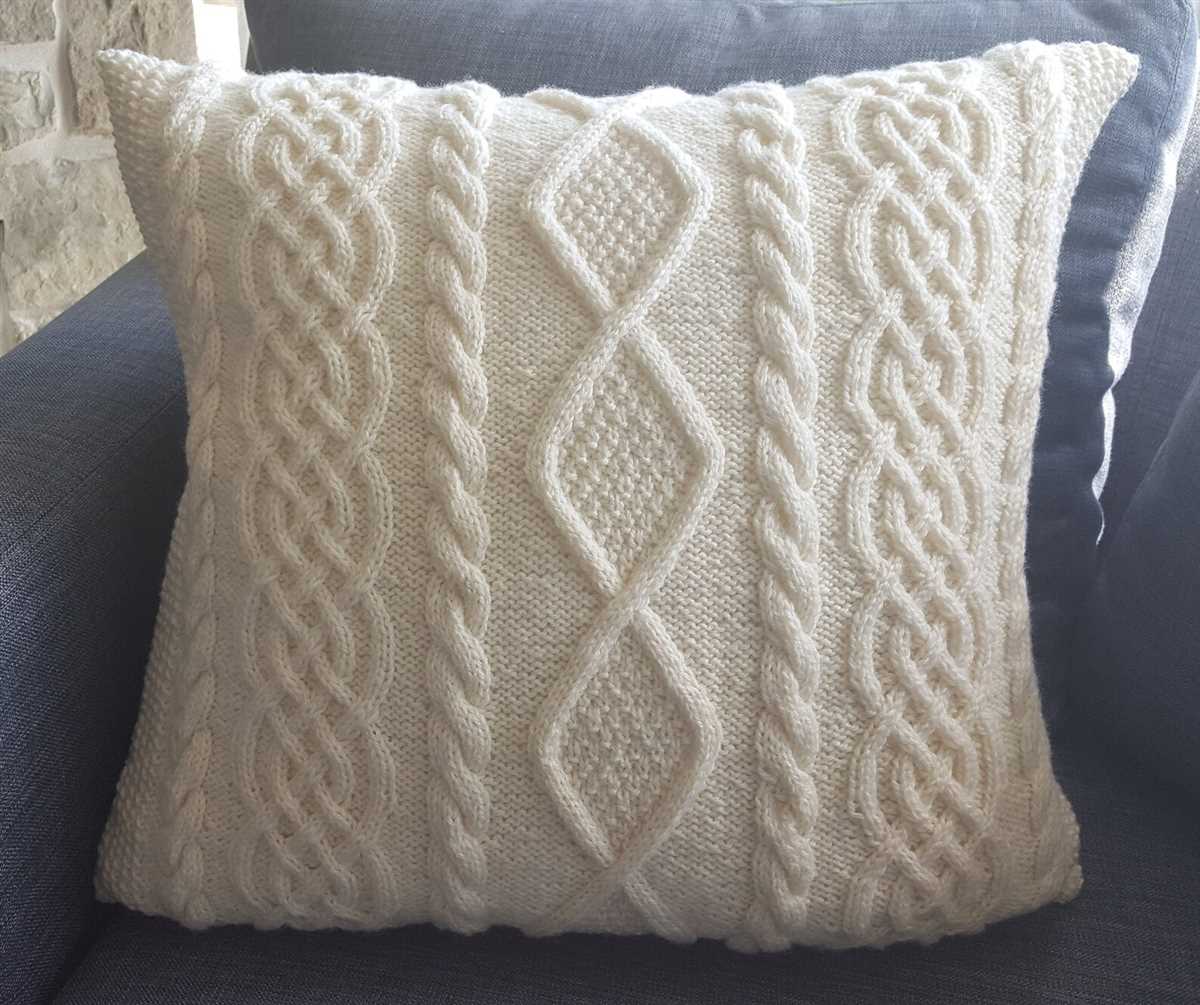
Knitting cable cushions requires a few specific tools and materials to achieve the desired results. Here are the essentials:
1. Knitting Needles:
To knit cable cushions, you will need a pair of knitting needles. The size of the needles will depend on the yarn weight you choose for your project. It is advisable to use circular or double-pointed needles to accommodate the large number of stitches required for a cushion.
2. Cable Needle:
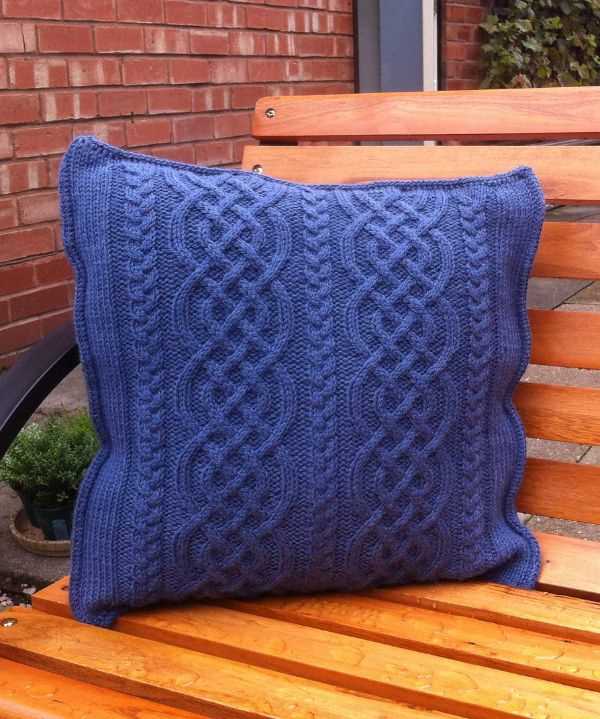
A cable needle is an essential tool for knitting cable patterns. It is usually a short and thin needle that helps hold stitches temporarily while you create the cable twists. Having a cable needle with a bit of texture or grip can prevent stitches from sliding off while you work.
3. Yarn:
Choose a soft and durable yarn suitable for cushions. Worsted weight or chunky yarns work well for cable knitting projects. Select a yarn color that complements your home decor or personal preference.
4. Stitch Markers:
Stitch markers can be helpful to mark specific sections of your cable pattern, making it easier to keep track of where you are in the design. You can use traditional stitch markers or even scrap yarn in a contrasting color.
5. Cable Knitting Patterns:
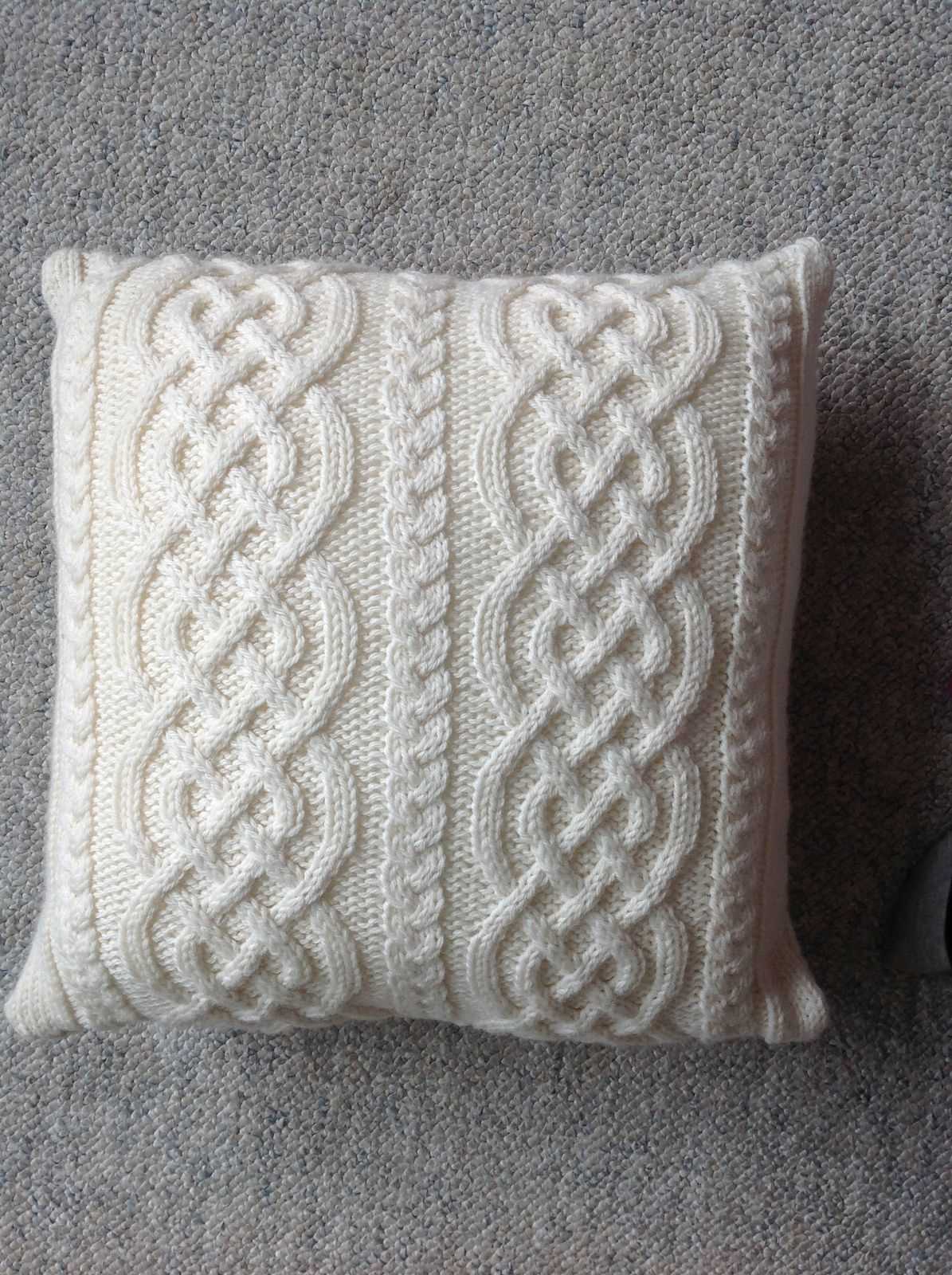
Find cable knitting patterns specifically designed for cushions. These patterns will guide you through the process of creating various cable designs and provide instructions on the stitch combinations needed for a beautiful cushion.
With these tools and materials, you’ll be well-equipped to start knitting cable cushions and create cozy and decorative additions to your home.
Basic cable knit stitch patterns for cushions
When it comes to creating cozy and stylish cushions, cable knit stitch patterns are a popular choice among knitting enthusiasts. These patterns add a touch of elegance and texture to any home decor, making them an ideal project for both beginners and experienced knitters.
One of the most basic cable knit stitch patterns for cushions is the classic six-stitch cable. This pattern involves crossing six stitches over each other, creating a braided effect that adds visual interest to the cushion. It’s a relatively simple pattern to master and can be easily adjusted to fit any cushion size.
How to knit the six-stitch cable pattern:
- Start by casting on the desired number of stitches for your cushion.
- Knit a few rows in your preferred stitch pattern (such as garter stitch or stockinette stitch) to create a base for the cable pattern.
- Identify the six stitches that will form the cable. These stitches should be located in the center of your cushion.
- Take the first three stitches and hold them in front of your work.
- Knit the next three stitches.
- Knit the three stitches that you were holding in front of your work.
- Continue knitting the remaining stitches in your chosen stitch pattern.
- Repeat these steps on subsequent rows to create a continuous cable pattern.
In addition to the six-stitch cable pattern, there are many other cable knit stitch patterns that you can explore for your cushions. These include the three-stitch cable, eight-stitch cable, and twisted cable stitch patterns, among others. Each pattern offers its own unique texture and design, allowing you to customize your cushions to suit your personal style.
Whether you’re a beginner knitter or an experienced one, cable knit stitch patterns provide endless opportunities for creating beautiful cushions. Experiment with different patterns, colors, and yarns to create cushions that not only provide comfort but also add a touch of style to your home.
Intermediate Cable Knit Stitch Patterns for Cushions
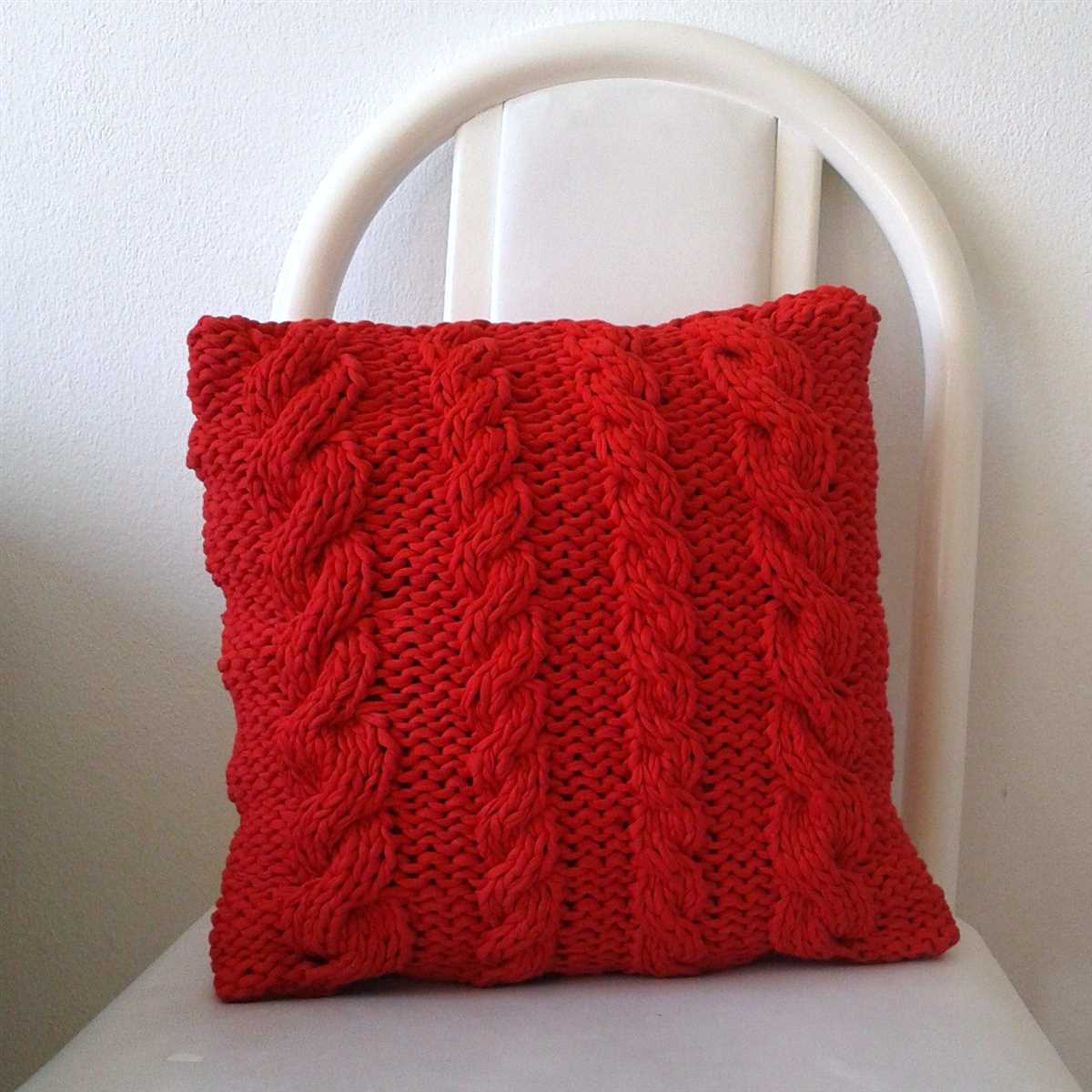
Cable knit stitch patterns are a great way to add texture and visual interest to your knitted cushions. If you have some experience with cable knitting and are looking for more challenging patterns, here are a few intermediate options to try:
1. Diamond Cable Pattern
The diamond cable pattern creates a beautiful textured design that works well for cushion covers. This pattern involves crossing stitches in a diamond shape and can be achieved using both 4-stitch and 6-stitch cables. The result is an intricate and visually stunning pattern that adds elegance to any cushion.
2. Honeycomb Cable Pattern
The honeycomb cable pattern is another intermediate option that creates a unique and intricate design. This pattern involves crossing stitches in a honeycomb-like pattern, creating a textured and three-dimensional effect. The honeycomb cable pattern is perfect for adding depth and dimension to your knitted cushions.
3. Celtic Knot Cable Pattern
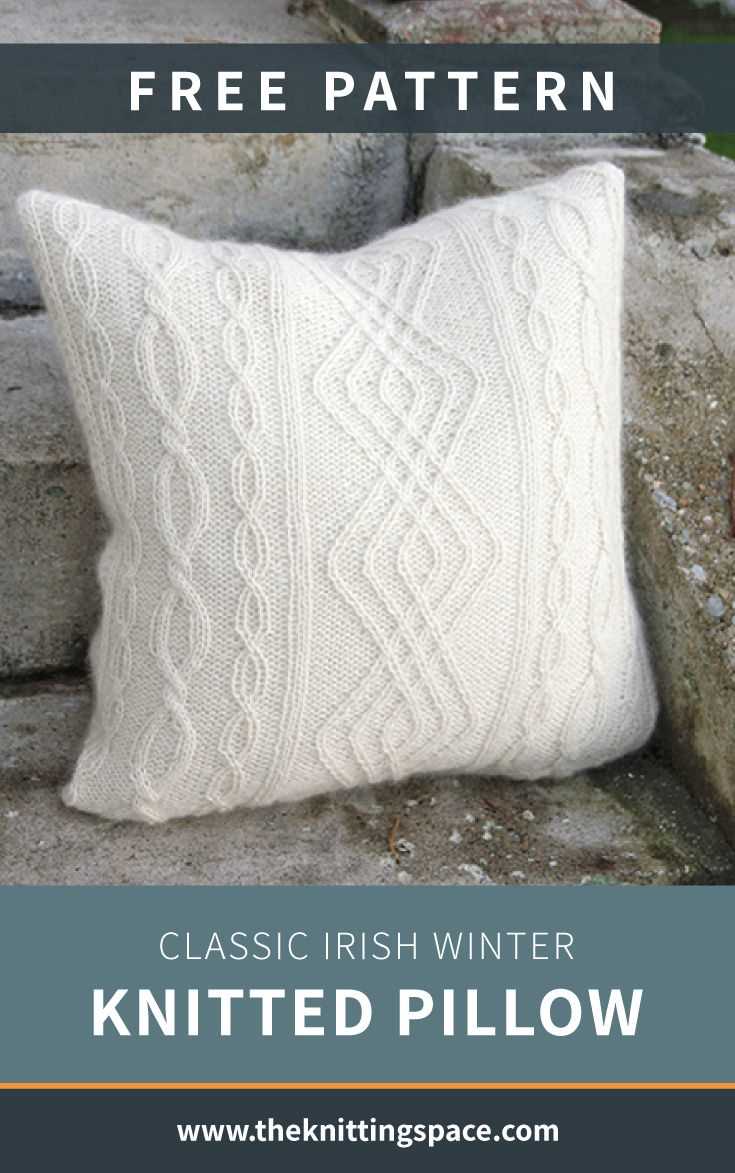
For a more intricate and challenging cable knit pattern, the Celtic knot cable pattern is an excellent choice. This pattern involves crossing stitches in a continuous knot-like design, creating a stunning visual effect that resembles traditional Celtic knotwork. While more complex than other cable patterns, the result is worth the effort.
4. Braided Cable Pattern
If you’re looking for a classic and timeless cable knit pattern for your cushions, the braided cable pattern is a great option. This pattern involves crossing stitches in a braided or twisted design, creating a visually striking effect. The braided cable pattern adds sophistication and elegance to any cushion.
When working with intermediate cable knit stitch patterns, it’s essential to pay attention to the pattern instructions and charts. Take your time, practice your cable knitting skills, and soon you’ll have beautiful cushions with intricate and eye-catching designs.
Advanced cable knit stitch patterns for cushions
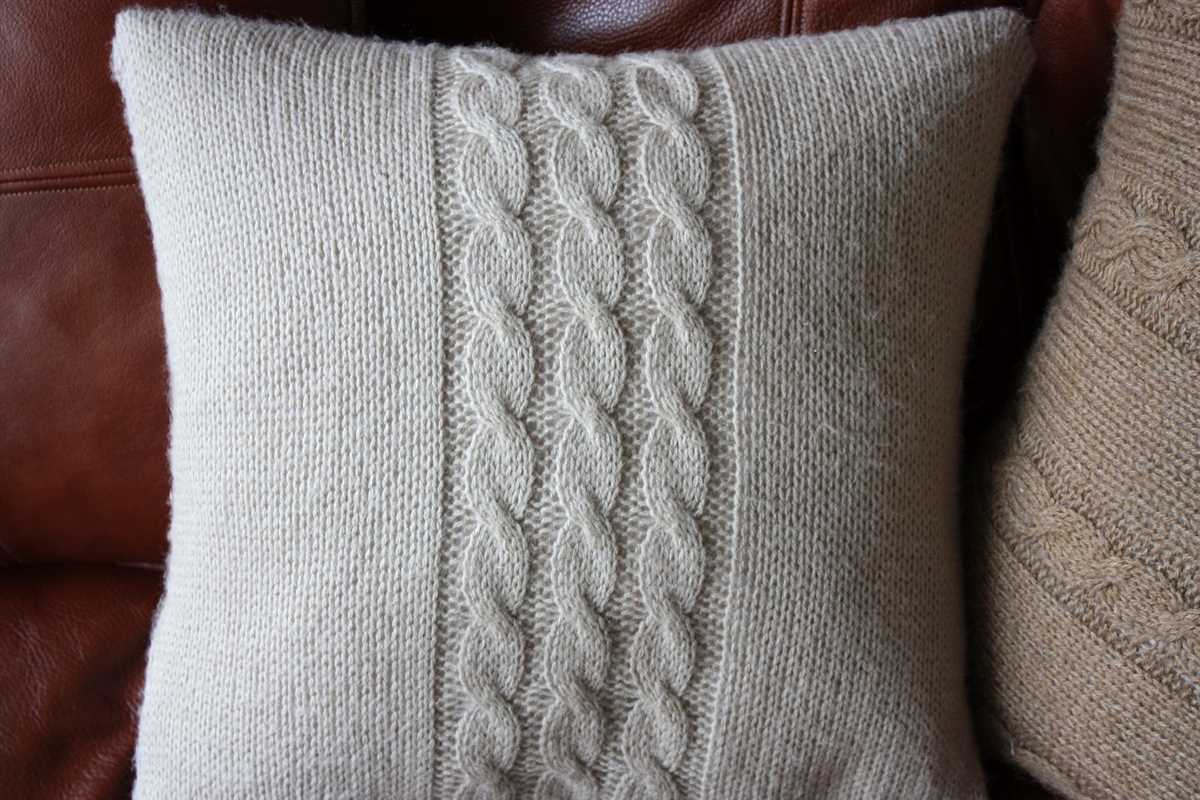
When it comes to creating beautiful and intricate cable knit patterns, there are advanced stitch patterns that can take your cushion knitting to the next level. These stitch patterns require a bit more skill and experience, but the results are well worth the effort.
1. Honeycomb Cable Stitch: This stitch pattern creates a stunning honeycomb design that adds texture and depth to your cushions. It involves crossing multiple cables in different directions to create the unique honeycomb pattern. The intricate design is perfect for creating a statement piece.
2. Double Diamond Cable Stitch: The double diamond cable stitch pattern is visually captivating and adds an elegant touch to your cushions. It consists of interweaving cables that form diamond shapes, resulting in a beautiful textured pattern. This stitch pattern is ideal for showcasing your advanced cable knitting skills.
3. Celtic Knot Cable Stitch: The Celtic knot cable stitch is a classic and timeless pattern that adds an air of sophistication to your cushions. It involves intricate twisting and braiding of the cables to create the intricate Celtic knot design. This stitch pattern is perfect for those looking to create a cushion with a touch of Celtic charm.
4. Tree of Life Cable Stitch: The tree of life cable stitch pattern is a symbol of growth, rebirth, and renewal. It features intertwined cables that form a tree shape, representing the interconnectedness of all living things. This stitch pattern adds a touch of symbolism and meaning to your cushion design.
5. Diamond Lattice Cable Stitch: The diamond lattice cable stitch pattern creates a delicate and intricate diamond lattice design. It involves crossing multiple cables in a specific pattern to form the diamond lattice pattern. This stitch pattern is perfect for adding an elegant and sophisticated touch to your cushions.
With these advanced cable knit stitch patterns, you can create cushions that are not only cozy but also visually stunning. Whether you choose to showcase a honeycomb design, the elegance of double diamonds, or the timeless beauty of Celtic knots, these advanced stitch patterns will elevate your cushion knitting skills and leave you with a unique and beautiful finished product.
Tips and Tricks for Cable Knit Cushion Projects
Knitting cable patterns can add a beautiful and intricate design to your cushion projects. Here are some tips and tricks to help you create stunning cable knit cushions:
1. Choose the Right Yarn
When selecting yarn for your cable knit cushion, opt for a yarn that has good stitch definition. This will help showcase the intricate cable patterns and allow them to stand out. Wool or wool-blend yarns are often a good choice, as they tend to have good stitch definition and provide warmth and softness.
2. Use Circular Needles
Circular needles are recommended for cable knit cushion projects, as they allow you to comfortably work with a large number of stitches. The cable of the needles can hold the weight of the cushion, preventing strain on your wrists. Additionally, circular needles make it easier to distribute the stitches evenly and work the cable patterns without interruption.
3. Practice Cable Techniques
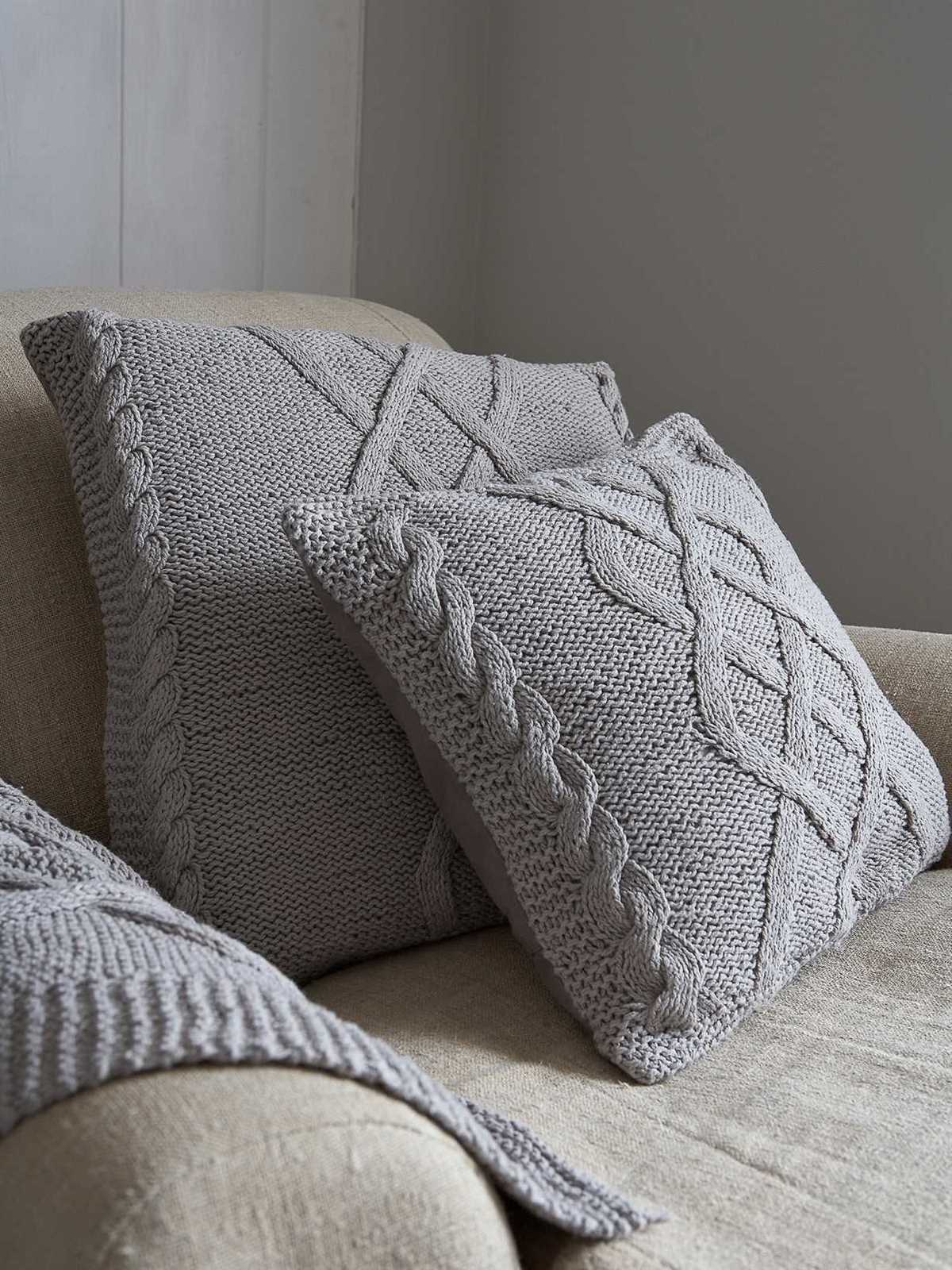
Cable knitting may seem daunting at first, but with practice, it becomes easier. Start with simple cable patterns and gradually work your way up to more complex designs. There are plenty of online tutorials and resources available to help you master cable techniques, such as cabling without a cable needle or creating twisted cables. Take the time to practice and experiment with different cable stitches to achieve the desired effect on your cushion.
4. Use Stitch Markers
Stitch markers can be incredibly helpful when working on cable knit cushions. Place them at the beginning and end of each cable pattern, marking the sections where the cables cross or twist. This will help you keep track of your stitches and prevent mistakes. Move the stitch markers as you progress to ensure accuracy and keep the cable pattern in line.
5. Block Your Cushion
Once you have completed your cable knit cushion, blocking is essential to give it a polished and professional finish. Blocking involves wetting the cushion, gently shaping it to the desired dimensions, and allowing it to dry flat. This process helps even out the stitches, open up the cable patterns, and ensure the cushion retains its shape.
With these tips and tricks, you’ll be well-equipped to embark on your cable knit cushion projects. Enjoy the process of creating beautiful and cozy cushions that will add a touch of warmth and style to your home.
How to measure and create a custom cushion cover
When it comes to creating a custom cushion cover, accurate measurements are key. The first step is to measure your cushion insert. Use a tape measure to determine the length, width, and height of the insert. Record these measurements for reference.
Once you have your measurements, you can calculate the dimensions for your cushion cover. Add an extra inch or two to the length and width to allow for ease of inserting and removing the cushion. If your cushion has rounded corners, make sure to measure the radius of the curve as well.
Materials needed:
- Fabric of your choice
- Tape measure
- Fabric scissors
- Sewing machine and thread
- Pins
- Iron
Once you have your measurements and materials ready, it’s time to start creating your custom cushion cover. Begin by laying out your fabric on a flat surface and folding it in half, right sides together. Use your tape measure and fabric scissors to cut out a rectangle that matches the dimensions you calculated earlier, adding seam allowances as needed.
Next, pin the sides of the fabric together, leaving one side open for inserting the cushion. Sew along the pinned edges using a sewing machine, making sure to backstitch at the beginning and end of each seam. Trim any excess fabric and press the seams open with an iron.
Finally, turn your cushion cover right side out and insert your cushion. If desired, you can add additional decorative elements such as buttons or a zipper closure. With these simple steps, you can create a custom cushion cover that perfectly fits your cushion and adds a touch of style to your home decor.
How to Care for Cable Knit Cushion Covers
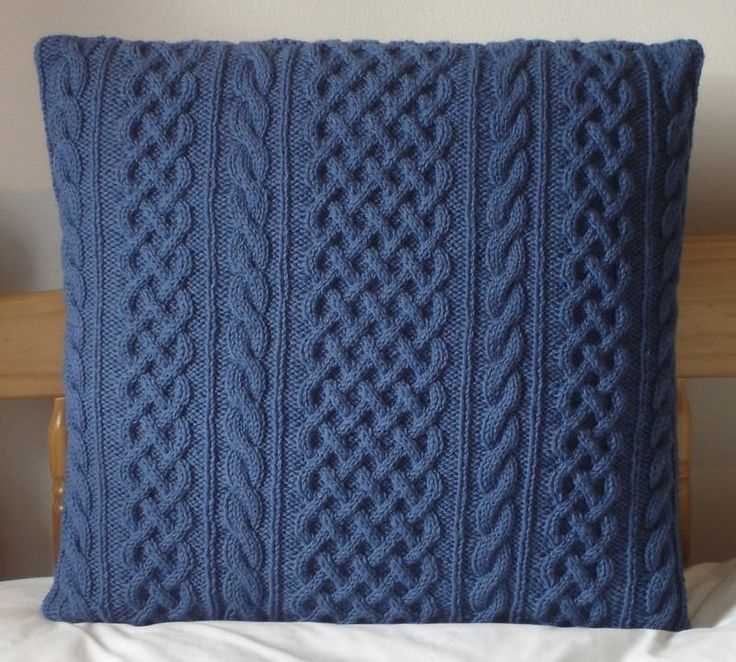
When it comes to caring for your cable knit cushion covers, it’s important to follow a few simple steps to ensure they stay in great condition and last for years to come.
1. Hand wash or delicate machine wash: Cable knit cushion covers are typically made from delicate materials, so it’s best to hand wash them or use a gentle cycle on your washing machine. Make sure to use cold water and a mild detergent that is suitable for delicate fabrics.
2. Avoid using bleach: Bleaching agents can damage the fibers of the cable knit and cause it to lose its shape. It’s best to avoid using bleach altogether when washing your cushion covers.
3. Dry flat: After washing, lay your cable knit cushion covers flat to dry. Avoid hanging them up or using a dryer, as this can stretch the fabric and change its shape.
4. Handle with care: Cable knit cushion covers can be delicate, so it’s important to handle them with care. Avoid pulling or stretching the fabric excessively, as this can cause it to lose its shape or develop holes.
5. Store properly: When not in use, it’s best to store your cable knit cushion covers in a clean, dry place. Avoid folding them in a way that can create creases or wrinkles. Instead, try to store them flat or rolled up to maintain their shape.
Following these care instructions will help ensure that your cable knit cushion covers stay beautiful and cozy for a long time. With proper care, they can become cherished heirlooms or favorite pieces of home decor.
Inspiration and Ideas for Using Cable Knit Cushions in Your Home
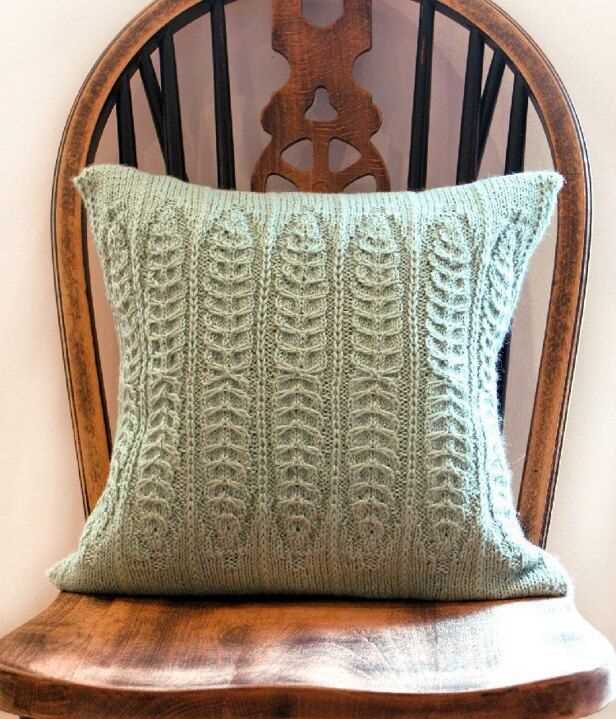
Cable knit cushions can add a cozy and stylish touch to any room in your home. Whether you prefer a traditional or modern aesthetic, these cushions can be incorporated into various design schemes. Here are some ideas and inspiration for using cable knit cushions in your home:
1. Living Room
Add warmth and texture to your living room with cable knit cushions. Place them on your sofas, armchairs, or even on the floor for a relaxed and inviting feel. Choose neutral colors for a timeless look, or opt for bold and vibrant hues to make a statement.
2. Bedroom
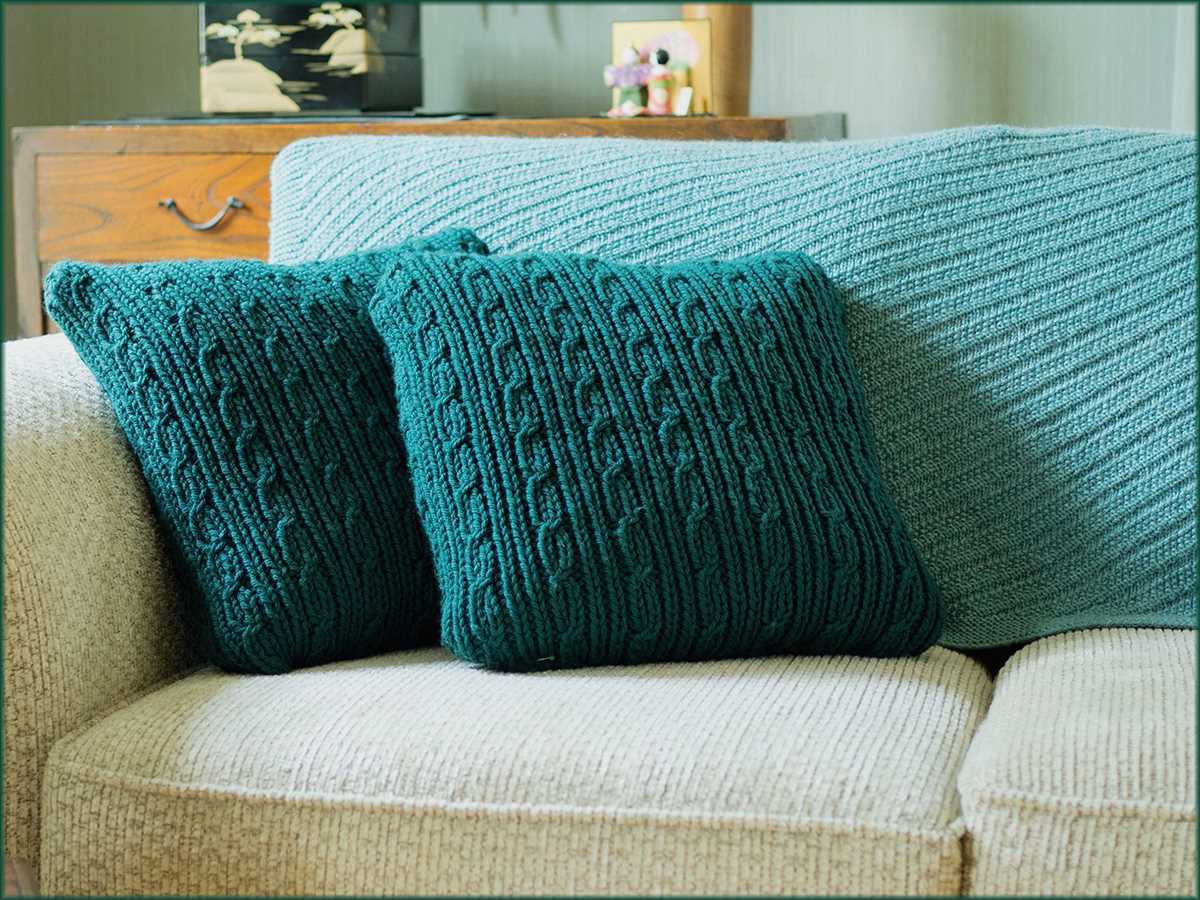
Create a cozy and luxurious bedroom by accessorizing your bed with cable knit cushions. Mix and match different sizes and patterns to add visual interest. Place them against patterned or solid-colored bedding for a layered and harmonious look.
3. Reading Nook
If you have a designated reading nook in your home, adding cable knit cushions can instantly make it feel cozier and more inviting. Place them on a comfortable armchair or pile them on the floor for a casual seating area.
4. Outdoor Spaces
Don’t limit the use of cable knit cushions to indoor spaces. They can also be a great addition to outdoor seating areas. Use weather-resistant materials to ensure their longevity and add a touch of warmth and comfort to your patio or porch.
5. Dining Chairs
Add a touch of elegance to your dining area by using cable knit cushions on your dining chairs. This unexpected but stylish choice will make your dining space feel more comfortable and visually appealing.
Conclusion
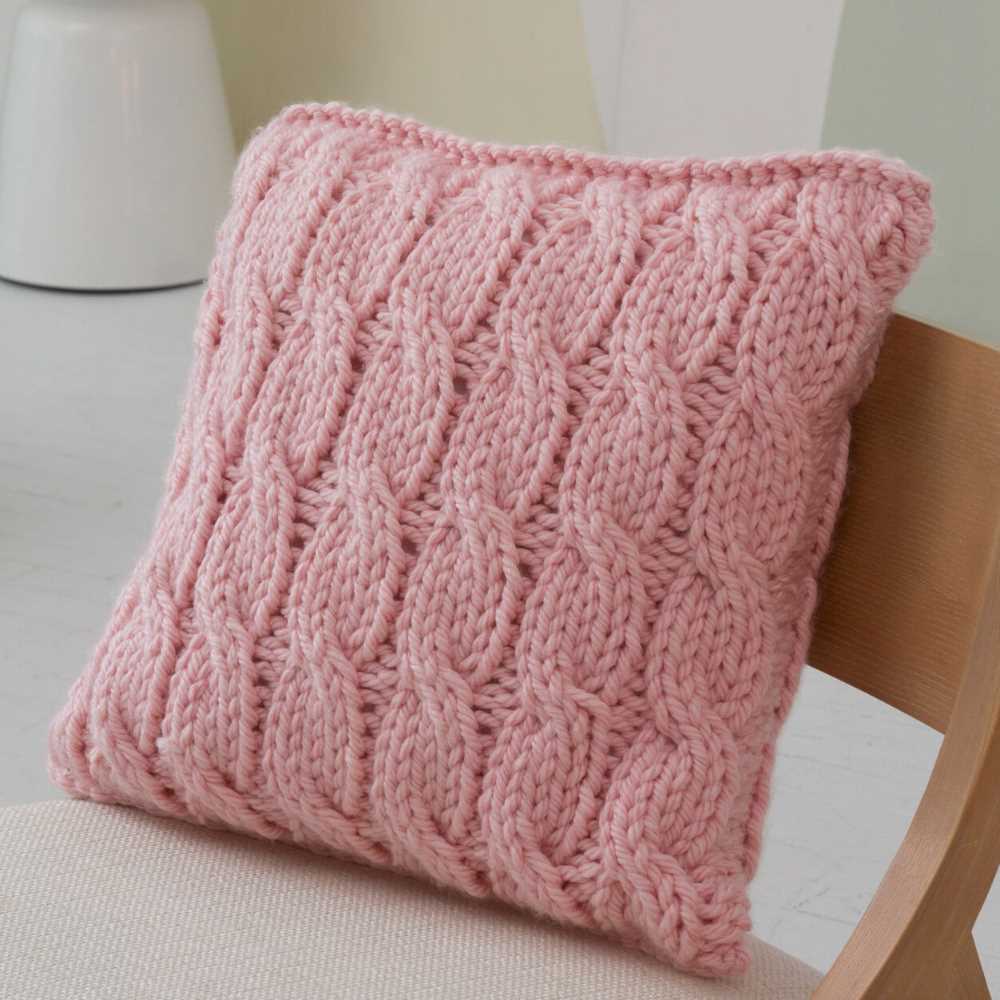
Whether you want to create a cozy ambiance or add a touch of texture to your home decor, cable knit cushions are a versatile and stylish accessory. From the living room to the outdoor spaces, there are numerous ways to incorporate them into your home. Get creative and have fun experimenting with different colors, patterns, and arrangements to create a unique and personalized look that reflects your style.